Ancient Egyptian Mythology › Utu-Shamash » Ancient origins
Articles and Definitions › Contents
- Ancient Egyptian Mythology › Antique Origins
- Utu-Shamash › Who Was
Ancient civilizations › Historical and archaeological sites
Ancient Egyptian Mythology › Antique Origins
Definition and Origins
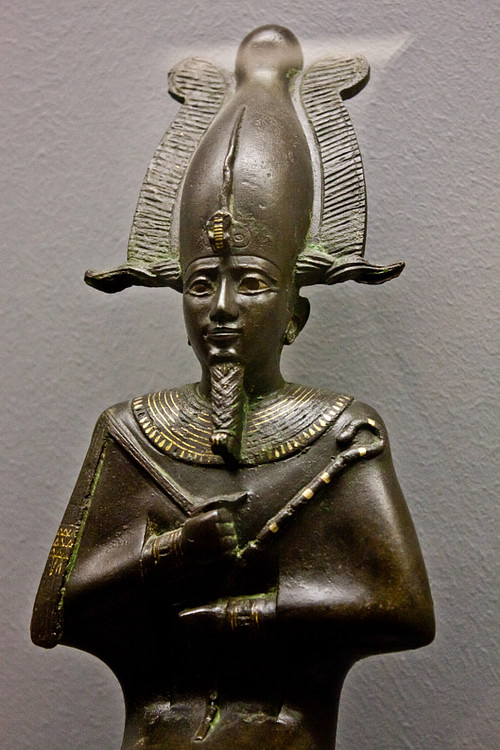
Egyptian Mythology was the belief structure and underlying form of ancient Egyptian culture from at least c. 4000 BCE (as evidenced by burial practices and tomb paintings) to 30 CE with the death of Cleopatra VII, the last of the Ptolemaic rulers of Egypt. Every aspect of life in ancient Egypt was informed by the stories which related the creation of the world and the sustaining of that world by the gods.
Egyptian religious beliefs influenced other cultures through transmission via trade and became especially wide-spread after the opening of the Silk Road in 130 BCE as the Egyptian port city of Alexandria was an important commercial centre. The significance of Egyptian mythology to other cultures was in its development of the concept of an eternal life after death, benevolent deities, and reincarnation. Both Pythagoras and Plato of Greece were said to have been influenced by Egyptian beliefs in reincarnation and Roman religious culture borrowed as extensively from Egypt as it did from other civilizations.
Human existence was understood by the Egyptians as only a small segment of an eternal journey presided over and orchestrated by supernatural forces in the forms of the many deities which comprised the Egyptian pantheon. According to the historian Bunson,
Heh, called Huh in some eras, was one of the original gods of the Ogdoad [the eight deities worshipped during the Old Kingdom, 2575-2134 BCE] at Hermopolis and represented eternity – the goal and destiny of all human life in Egyptian religious beliefs, a stage of existence in which mortals could attain everlasting bliss (86).
One's earthly life was not, however, simply a prologue to something greater but was a part of the entire journey. The Egyptian concept of an afterlife was a mirror-world of one's life on earth (specifically, one's life in Egypt) and one needed to live that life well if one hoped to enjoy the rest of one's eternal journey.
THE CREATION OF THE WORLD
To the Egyptians, the journey began with the creation of the world and the universe out of darkness and swirling chaos. Once there was nothing but endless dark water without form or purpose. Existing within this void was Heka (god of magic) who awaited the moment of creation. Out of this watery silence (`Nu') rose the primordial hill, known as the Ben-Ben, upon which stood the great god Atum (or, in some versions of the myth, Ptah). Atum looked upon the nothingness and recognized his aloneness and so, through the agency of magic, he mated with his own shadow to give birth to two children, Shu (god of air, whom Atum spat out) and Tefnut (goddess of moisture, whom Atum vomited out). Shu gave to the early world the principles of life while Tefnut contributed the principles of order.
Leaving their father on the Ben-Ben, they set out to establish the world. In time, Atum became concerned because his children were gone so long and so removed his eye and sent it in search of them. While his eye was gone, Atum sat alone on the hill in the midst of chaos and contemplated eternity. Shu and Tefnut returned with the eye of Atum (later associated with the Udjat eye, the Eye of Ra, or the All-Seeing Eye) and their father, grateful for their safe return, shed tears of joy. These tears, dropping onto the dark, fertile earth of the Ben-Ben, gave birth to men and women.
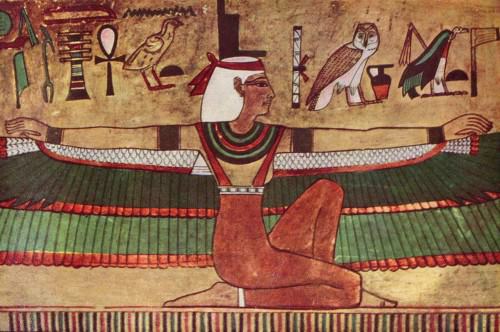
Isis
These early creatures had nowhere to live, however, and so Shu and Tefnut mated and gave birth to Geb (the earth) and Nut (the sky). Geb and Nut, though brother and sister, fell deeply in love and were inseparable. Atum found their behaviour unacceptable and pushed Nut away from Geb, high up into the heavens. The two lovers were forever able to see each other but were no longer able to touch. Nut was already pregnant by Geb, however, and eventually gave birth to Osiris, Isis, Set, Nephthys, and Horus – the five Egyptian gods most often recognized as the earliest or, at least, the most familiar representations of older god-figures. Osiris showed himself a thoughtful and judicious god and was given rule of the world by Atum who then went off to attend to his own affairs.
OSIRIS AND SET
Osiris administrated the world efficiently, co-ruling with his sister-wife Isis, and decided where the trees would best grow and the water flow most sweetly. He created the land of Egypt in perfection with the Nile River providing for the needs of the people.
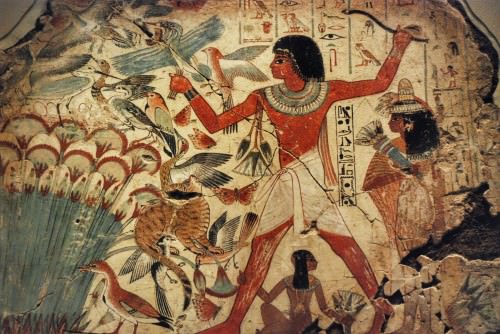
Egyptian Hunting in the Marshes
In all things, he acted in accordance with the principle of Ma'at (harmony) and honoured his father and siblings by keeping all things in harmonious balance. His brother Set became envious of the creation, however, and also of Osiris' power and glory.He had his brother's exact measurements taken in secret and then ordered an elaborate chest created precisely to those specifications. When the chest was completed, Set threw a great banquet to which he invited Osiris and seventy-two others. At the end of the party he offered the great chest as a gift to the one who could best fit inside it. Osiris, of course, fit perfectly and, once he was inside the coffin, Set slammed the lid on tight and threw it into the Nile River. He then told everyone that Osiris was dead and assumed the rule of the world.
Isis refused to believe that her husband was dead and went searching for him, finally finding the coffin inside a tree at Byblos.The people of the land were glad to help her retrieve the coffin from the tree and, for this, Isis blessed them (as they later became the principal exporters of papyrus in Egypt, it is thought this detail was added by a scribe to honour the city which was so important to the writer's trade). She brought the body back to Egypt and set about gathering the herbs and making the potions which would bring Osiris back to life; leaving her sister Nephthys to guard over the place where she had hidden the body.
During this time, Set began to worry that Isis might locate Osiris' body and find a way to bring him back to life, as she was very powerful and knowledgeable in these matters. Upon finding her gone, he asked Nephthys where she was and, when the goddess answered, he knew she was lying. He was able to get from her where Osiris' body was hidden and went there, tearing the coffin open, and cutting the body into forty-two pieces (though some sources claim only fourteen). He then flung the fragments of Osiris all over the land of Egypt so that Isis would never be able to find them and, this accomplished, returned to his palace to rule.
When Isis returned and found the coffin destroyed and the body gone, she fell to her knees in despair and wept. Nephthys, feeling guilty for having betrayed her secret, told Isis what had happened and offered to help her find the parts of Osiris. The two sisters then began searching the land for Osiris' parts. Wherever they found a body part, they would bury it on the spot and build a shrine to protect it from Set. In this way the forty-two provinces of Egypt were established by the two goddesses.
They finally assembled all of the body except for the penis, which had been eaten by a fish. Isis then created a replacement part for the phallus and mated with her husband, becoming pregnant with her son Horus. Osiris had been brought back to life successfully by Isis but, because he was incomplete, could not rule the world as he had before. He instead descended to the underworld to become the righteous judge and ruler of the land of the dead.
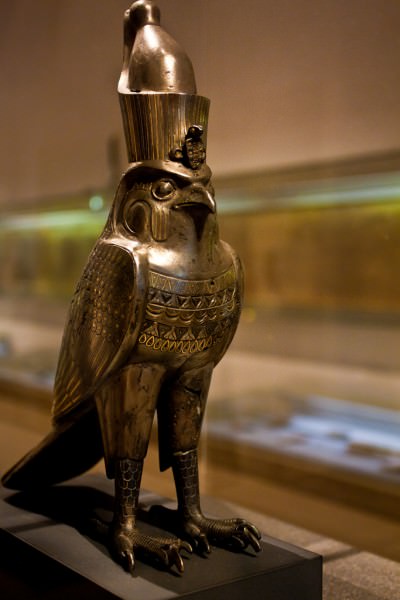
Horus
Horus (sometimes known as Horus the Younger to differentiate from Horus the brother of Osiris) was raised in secret to protect him from Set and, having grown to manhood, challenged his uncle for the rule of his father's former kingdom. The battle raged for eighty years until Horus defeated Set and banished him from Egypt to dwell in the arid deserts (though there are many variants of this story and, in some, Horus and Set agree to divide the kingdom and, in others, Set is destroyed). Horus then ruled with his mother Isis and aunt Nephthys as his counselors and harmony was again restored to the land.
THE IMPORTANCE OF MA'AT
Although there are many different versions of this myth, the one element which remains standard in all of them is the concept of harmony which is disrupted and must be restored. The principle of Ma'at was at the heart of all of Egyptian mythology and every myth, in some form or another relies upon this value to inform it. The historian Jill Kamil writes: “Storytelling played an important part in the lives of the ancient Egyptians. The deeds of the gods and kings were not written in early times and only found their way through oral tradition into the literature of a later date” (Nardo, 52). It is interesting to note that, no matter what era the tales were first composed in, the principle of harmonious balance, of ma'at, is at the heart of them all.
The repulsing of Apep [ Apophis ], the evil dragon-like creature that lurked on the horizon, was [a] popular tale.Each evening, at sunset, it tried to stop the passage of the setting sun through the underworld. If the sky was clear, it indicated an easy passage; a blood-red sunset showed a desperate battle between the forces of good and evil; but the sun was the victor and there was always a new dawn. [The Egyptians] told tales of how the vegetation that died with the harvest was reborn when the grain sprouted, just as the sun-god `died' each evening and was reborn the next morning (Nardo, 53-54).
Everything in the universe was thought to be maintained in a constant balance without a terminus and, as human beings were a part of that universe, they too participated in this eternal balance. Ma'at was made possible by the underlying force which existed before creation and made all aspects of life possible: heka. Heka was the magical power which enabled the gods to perform their duties and sustained all life and was personified in the god Heka who also allowed for the soul to pass from earthly existence to the afterlife.

Shabti Dolls
When the soul left the body at death, it was thought to appear in the Hall of Truth to stand before Osiris for judgement. The heart of the deceased was weighed on a golden scale against the white feather of Ma'at. If the heart was found to be lighter than the feather, the soul was allowed to move on to the Field of Reeds, the place of purification and eternal bliss. If the heart was heavier than the feather, it was dropped on to the floor where it was eaten by the monster Ammut (the gobbler) and the soul would then cease to exist.
Although there existed a concept of the underworld, there was no `hell' as understood by modern-day monotheistic religions.As Bunson writes, “The Egyptians feared eternal darkness and unconsciousness in the afterlife because both conditions belied the orderly transmission of light and movement evident in the universe” (86). Existence, being a part of the universal journey which began with Atum and the Ben-Ben, was the natural state of a soul and the thought of being eternally separated from that journey, of non-existence, was more terrifying to an ancient Egyptian than any underworld of torment could ever be; even in a land of eternal pain, one still existed.
A concept of an underworld similar to the Christian hell did develop in Egypt but was by no means universally accepted.Bunson writes, “Eternity was the common destination of each man, woman, and child in Egypt. Such a belief infused the vision of the people…and gave them a certain exuberance for life unmatched anywhere in the ancient world” (87). The mythology of the ancient Egyptians reflected that joy in living and inspired the great temples and monuments which are such a part of Egypt's legacy today. The enduring admiration for Egyptian mythology, and the culture it informed, is a testimony to the power of the life-affirming message inherent in these ancient tales.
Utu-Shamash › Who Was
Definition and Origins
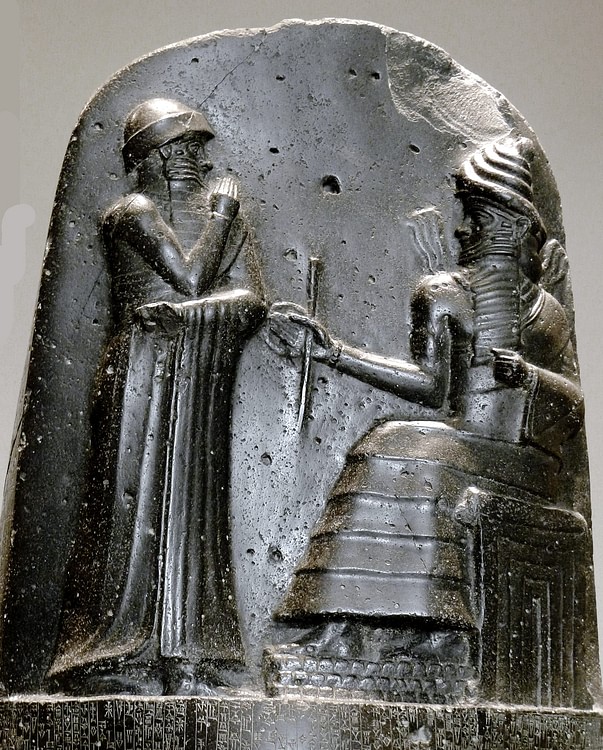
Utu (also known as Shamash, Samas, and Babbar) is the Sumerian god of the sun and divine justice. He is the son of the moon god Nanna and the fertility goddess Ningal in the Sumerian tradition but was known as Shamash (Samas) to the Akkadians who claimed Anu or Enlil as his father. In the Sumerian tradition, he is the twin brother of Inanna (goddess of war, love, and sexuality) and brother of Ereshkigal (Queen of the Dead), and Ishkur (also known as Adad, god of storms). He is one of the most important deities in the Mesopotamian pantheon and is attested to in the earliest Sumerian writings c. 3500 BCE, though seemingly after the appearance of Nanna.
He is usually depicted as an old man with a long beard whose shoulders emanate rays of light but is also represented as the solar disc or, in the Neo-Assyrian Period (c. 912-612 BCE), as a disc with wings. The famous law code of Hammurabi (1792-1750 BCE) addresses Shamash by name and claims it was Shamash who provided humanity with law. In Sumer, his cult centers were at Larsa and Eridu and to the north, in Akkad, he was famously venerated at Sippar. His temples were known as E-babbar ('White House' or 'Shining House') which name attached itself to the god as Babbar, the illuminating one.
Utu/Shamash's wife was Serida (in Akkadian, Aya), the goddess of the dawn who, by the Old Babylonian Period (c. 2000-1600 BCE), was the patroness of the naditu. These were cloistered women who had dedicated themselves to the divine, similar in some ways to certain orders of Catholic nuns in the present day. The naditu are routinely associated with Utu/Shamash because their cloister was attached to his temples, but they actually worshiped and served his wife Serida/Aya.
MOST OF THE MYTHS FEATURING UTU/SHAMASH EMPHASIZE HIS KINDNESS & GENEROSITY.
The first literary hymns addressed to this god by the name Shamash (Samas) date from c. 2600 BCE, but he was referenced as Utu or Shamash regularly throughout Mesopotamian history from the advent of cuneiform writing (c. 3500 BCE) until its abandonment c. 100 BCE, well over three thousand years. His symbol of the solar disc shows a circle with four points protruding toward the cardinal directions and four wavy lines emanating diagonally outward from between them, representing the power, light, warmth, and reach of the sun.
GOD OF JUSTICE
As the sun sailing across the sky could obviously see everything that transpired on earth, Utu/Shamash was not only the bringer of light but the arbiter of justice. Orientalist Jeremy Black notes how Utu/Shamash "represents the brilliant light of the sun which returns every day to illuminate the life of mankind, as well as giving beneficial warmth which causes plants to grow" (182). The light of the sun was thought to be able to penetrate and pierce every level of the earth, even to the underworld, and illuminate the human heart. There was nothing, therefore, which Utu/Shamash did not see. Scholar EA Wallis Budge notes:
In primitive times he was supposed to stride over the heavens on foot but in later times to do so in a fiery chariotwhich was drawn by animals driven by one Bunene. He was regarded as a gracious god for he helped all who were in trouble, gave life to the dead, and set free him that was in bonds. Possessing the power to see everywhere, he knew all things, and judged men rightly. (85)
Bunene, a minor deity, is often represented as his son and was worshiped at Sippar, Uruk, and Ashur as a god of justice. As the son of Nanna, Utu/Shamash was always listed in a secondary position to his father, but he was by no means considered of any less importance. His symbols and signs, as well as myths and hymns, are among the most numerous in Mesopotamian artifacts, inscriptions, and literature. Hammurabi, a very clever and careful king, understood well how invoking the name of Shamash for his law code would give it considerably more weight. This is not to say he did not believe in this god or his power, but he could have as easily chosen Marduk (who was, after all, patron god of his city of Babylon ) or Enki, well known as the god of wisdom. Utu/Shamash was the clear choice, however, because his presence was so obvious daily through the light of the sun.
GOD OF THE SUN
Every morning Utu/Shamash emerged from the doors of heaven in the east. Two lesser gods swung wide these doors for him as came forth and stepped into his chariot to ride across the sky toward the west, where two other gods opened their gates for him to enter. He then rested in the underworld until he was awakened by his wife at dawn and went again to his chariot. The entrance to the Mesopotamian underworld was thought to lie in the west, quite close to the western gates of the sun god, and in some eras, it was believed that Utu/Shamash descended into the underworld at dusk to judge the dead.
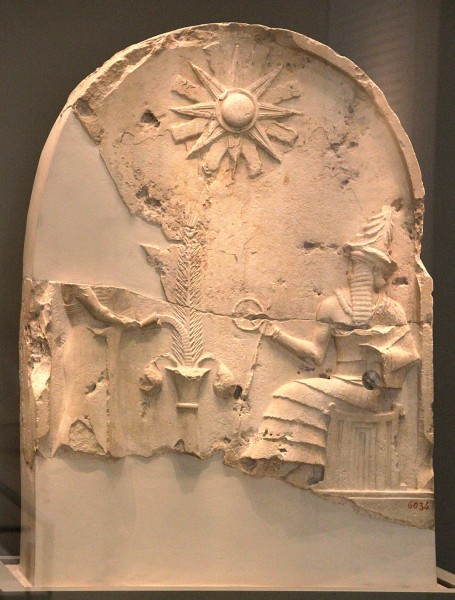
Utu-Shamash
The judgment of the dead is an interesting variation on the standard view of the underworld in which the souls of the departed were all equal. Death was the great equalizer who brought king and beggar to the same exact place; there was no demarcation of a heaven or hell but only a dim realm where the souls ate of the dust and drank from muddy puddles. In the Sumerian belief, however, the dead were judged and that judgment affected their future in the afterlife, even if by very little.Orientalist Samuel Noah Kramer writes:
The deceased were not treated all alike; there was a judgment of the dead by the sun god, Utu, and to a certain extent by the moon-god Nanna, and if the judgment was favorable the dead man's soul would presumably live in happiness and contentment and have all it desired. However, the indications are that the Sumerians had but little trust in hopes of a blissful life in the nether world even for the good and deserving. By and large the Sumerians were convinced that life in the nether world was but a dismal, wretched, reflection of life on earth.(135)
Still, since the sun could illuminate even the darkest places, it seems there was hope that Utu/Shamash would reach into the netherworld and touch the souls of the departed. Like his father Nanna, Utu/Shamash then served as a kind of bridge between the living and those who had passed on to the other side. It was believed that food and water and other offerings should continue to be brought to the dead because they continued to exist, simply without bodies, and still needed sustenance.
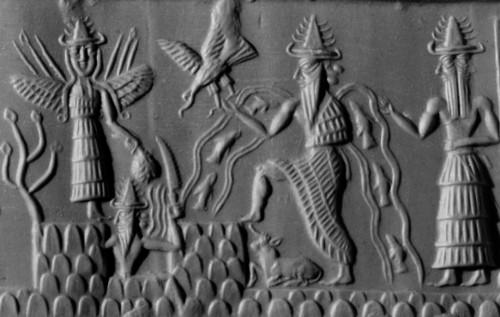
Adda Seal
However Utu/Shamash's judgment of them went, it was clear the souls still existed to be judged, and so the living continued to honor them with offerings. If the dead were worthy of notice by the sun god, mortals could take the time to honor and remember them as well. Utu/Shamash is almost always depicted as a kind benefactor, freely giving the gifts of life, but like many of the most important Mesopotamian gods, he was a completely realized individual and was not above refusing a request which inconvenienced him.
UTU/SHAMASH IN MYTH
Most of the myths featuring Utu/Shamash emphasize his kindness and generosity. In the Myth of Etana (which predates the reign of Sargon of Akkad, 2334-2279 BCE), the hero petitions Shamash for aid in helping his wife conceive at the same time that an eagle and a serpent are feuding over ownership of a poplar tree and are also asking for help. The god takes care of each request justly and carefully in the same way as, in The Epic of Gilgamesh, he helps the hero conquer the demon of the Cedar Forest, Humbaba. He was not always so accommodating, however.
In the story of Inanna and Huluppu-Tree, the goddess takes a young Huluppu-tree (possibly a willow) and transplants it in her city of Uruk, thinking that, when the tree reached maturity, she would use its wood to craft a throne and couch to recline on. As the years went by, a snake built a nest in its roots, an Indugud-bird nested in its branches and, at its center, the evil spirit of a Lillitu set up house. When Inanna came to water her tree one evening and found these unwanted guests, she sat down and cried through the night.
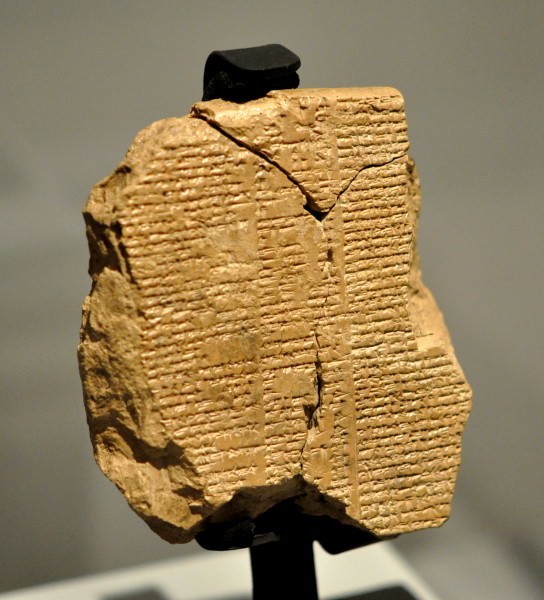
Part of Tablet V, the Epic of Gilgamesh
At dawn, her twin brother Utu/Shamash rose in the east and began his journey across the sky. Inanna called out to him and told him of her trouble, but he could not stop his daily trek and, further, told her he felt no need to. Inanna then sought the aid of Gilgamesh, who killed the snake, drove the bird away, and sent the Lillitu demon running. Afterwards, he cut down the tree and presented it to Inanna for her throne and couch.
This was no selfish request on her part because, from the tree, she created the sacred drum and drumsticks for Gilgamesh which he was supposed to use for good but then misused for war; they were taken from him and drawn down to the netherworld. This story then sets the stage for the myth in which Enkidu, the comrade in arms of Gilgamesh and his best friend, descends to the underworld to bring them back, and after his death, Utu/Shamash parts the veil so that the two friends can talk one last time. This myth highlights a central aspect of the personality of Utu/Shamash: his involvement in the most intimate aspects of one's life. Jeremy Black comments on this, after listing the god's aspects regarding the sun and justice, writing:
A third aspect of Utu was his direct interest in the affairs of mankind. one of the early legendary kings of Uruk is described as a 'son of Utu' in the composition called the 'Sumerian King List,' and Utu acted as a special protector of some of the later heroic kigs of the city, for instance Gilgamesh. In the Babylonian Epic of Gilgamesh, Shamash helps the hero against the monstrous guardian of the Cedar Forest, Humbaba. In the Sumerian poem 'Dumuzi's Dream,' Utu helps Dumuzi to escape from the galla-demons who have come to take him to the underworld. (184)
Throughout The Epic of Gilgamesh, Utu/Shamash is noted for his kindness and diligence in watching over the hero and, for this reason, came to be regarded as the patron god of travelers and vagabonds. He also became associated with the highest of the gods and even the benefactor of the gods, who provided them with a home.
At one point in The Epic of Gilgamesh, when Gilgamesh and Enkidu are setting out for the Cedar Forest, Gilgamesh says to his comrade, "Where is the man who can clamber to heaven? Only the gods live forever with glorious Shamash, but as for us men, our days are numbered, our occupations are a breath of wind" (Sanders, 71). The hopes and dreams, the aspirations and struggles of humanity were considered little more than a vapor, but Utu/Shamash was eternal, and he would continue on long after any individual life was only a memory. Although his name was forgotten as Christianity gained acceptance, the vision of a loving son of a god, the light of the world, was not.
See other Related Contents ››
LICENSE:
Article based on information obtained from these sources:with permission from the Website Ancient History Encyclopedia
Content is available under License Creative Commons: Attribution-NonCommercial-ShareAlike 3.0 Unported. CC-BY-NC-SA License